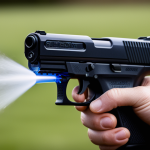Overview of Recovery Importance in Polo
Polo players subject themselves to significant physical demands, making effective recovery strategies crucial for sustained performance and injury avoidance. This dynamic sport requires a combination of agility, strength, and endurance, placing substantial stress on muscles and joints. Understanding these demands highlights the necessity of holistic recovery practices.
When recovery is neglected, the consequences manifest as decreased performance levels and increased injury rates. Inadequate recovery leads to muscle fatigue, potentially resulting in overuse injuries. Notably, an exhausted player is more prone to errors, which can affect both their individual performance and the team’s success.
Also read : Top Athlete Recovery Strategies: Boost Performance After Competition
Recovery extends beyond physical restoration; it involves mental recuperation too. A comprehensive recovery regimen should include both physical techniques and mental practices to fully rejuvenate the body and mind. This encompassing approach ensures players are not only physically prepared for subsequent matches but mentally focused and resilient as well.
Incorporating effective recovery strategies can significantly enhance a player’s overall performance. By dedicating time to both physical and mental recovery, players can maintain peak condition, reduce injury risk, and ultimately extend their sporting careers. As such, prioritising recovery is indispensable for any aspiring polo player aiming for long-term success.
Also to discover : Your guide to the best gel blasters in the uk
Nutrition Strategies for Optimal Recovery
In the unforgiving world of polo, the right nutrition can make all the difference in a player’s recovery and subsequent performance. Post-Match Nutrition is essential for polo players to replenish glycogen stores and repair muscle tissues, ensuring they are ready for the next game.
Key Nutrients for Recovery
Incorporating proteins, carbohydrates, and fats into a polo player’s diet is crucial. Proteins aid in muscle repair; lean meats, beans, and dairy are recommended sources. Carbohydrates are essential for replenishing energy and can be found in whole grains and fruits. Healthy fats from avocados and nuts contribute to cellular recovery and energy.
Timing of Nutritional Intake
The timing of nutrient consumption is paramount post-match. It is optimal to consume a balanced meal within 30 minutes to 2 hours after playing. Meal composition should include a mix of protein and carbohydrates to maximize recovery.
Supplements to Consider
Recovery supplements can be beneficial. Creatine aids muscle recovery, while branched-chain amino acids (BCAAs) can reduce muscle soreness. It’s important for polo players to choose supplements that are backed by scientific evidence and tailored to their individual recovery needs.
Hydration Techniques Post-Match
After intense matches, hydration is critical for an effective polo player recovery. Dehydration not only impairs performance but also increases the risk of muscle cramps and heat exhaustion. Maintaining fluid replacement aids in replenishing lost electrolytes, which are essential for muscle function and recovery.
Strategies for Effective Rehydration
After a match, begin rehydration immediately. Consuming water is vital, but integrating electrolyte drinks can accelerate recovery by replacing lost minerals like sodium and potassium. Aim for approximately 1.5 liters of fluid for every kilogram lost during play. This measured approach ensures that fluid levels are restored to maintain optimal physical function.
Recognising and Combating Dehydration
Signs of dehydration, such as dizziness, dry mouth, and fatigue, should be promptly addressed. A first step in combating these symptoms is regularly monitoring urine colour; a clear, light yellow indicates adequate hydration. For effective hydration, small, frequent sips are better than large quantities at once, ensuring absorption without overwhelming the body.
Hydration techniques not only assist in physical recovery but also prepare the body for subsequent activities. An understanding and execution of effective hydration strategies can drastically enhance overall health and performance. By prioritizing these methods, polo players can safeguard against dehydration, optimising their post-match recovery.
Physical Recovery Methods
Physical recovery is a crucial component for polo players, aiming to maintain their peak performance and promote longevity in the sport. Comprehensive recovery techniques help not only in injury prevention but also in boosting overall resilience.
Stretching Routines
Implementing well-structured stretching routines can significantly aid in muscle recovery. Dynamic stretches prior to matches, such as leg swings and arm circles, enhance flexibility and prepare muscles for activity. Static stretches post-match, like quad stretches or hamstring stretches, assist in reducing muscle soreness. Aim for each stretch to last at least 15 to 30 seconds, ensuring muscles are gradually elongated to prevent injuries.
Role of Active Recovery
Active recovery involves engaging in low-intensity exercises following high-impact activities. These exercises, such as swimming or cycling, enhance blood circulation, expediting the removal of lactic acid from muscles. For polo players, incorporating activities like leisurely walking or light jogging can effectively aid in recovery without overtaxing the body.
Importance of Rest and Sleep
Optimal recovery is incomplete without sufficient rest and quality sleep. Sleep facilitates muscle repair and cognitive function, both vital for optimal sports performance. Ensure a consistent sleep schedule, accompanied by a calm environment. Techniques such as reducing blue light exposure before bed can enhance sleep quality, improving overall recovery.
Mental Recovery Practices
Mental recovery is paramount in recharging a polo player’s mind, thus contributing significantly to sports performance. Just as the body requires rest, the mind benefits from strategic recovery practices, such as mindfulness in sports.
Techniques for Mindfulness and Relaxation
Practices like meditation and controlled breathing exercises post-match can enhance a player’s concentration and stress management. The precision of these techniques stimulates cognitive relaxation, essential for a clear focus during gameplay. Performance psychology emphasizes the profound effects of relaxation techniques on sports outcomes. By incorporating short meditation sessions daily, players can reduce anxiety, fostering a calm yet alert mindset pre-competition.
Benefits of Mental Visualisation and Positive Affirmations
Mental visualization involves mentally rehearsing a successful performance. Precise imagery fosters an athlete’s confidence and refines strategic thinking. Positive affirmations, repeated consistently, help reinforce self-belief, counteracting self-doubt. Affirmations like “I am focused and strong” can be pivotal. Notably, these practices train the mind to instinctively expect success, boosting overall performance.
Implementing a structured mental recovery plan, including mindfulness and visualisation, enables players to excel under pressure. In essence, mental recovery complements physical recovery, creating a holistic approach. Effective synchronization of the two ensures outcomes are not only sustained but strategically elevated, ultimately enhancing a polo player’s career longevity.
Expert Insights and Case Studies
Diving into recovery insights from professional players can provide invaluable lessons for the broader polo community. Success often lies in observing and integrating the strategies used by elite athletes.
Testimonials from Professional Polo Players
Professional players frequently share their recovery experiences. For instance, a notable player attributed his reduced injury rates and enhanced performance to a meticulously crafted routine, which included specific stretching and active recovery exercises. These testimonials reveal how tailored strategies can make a significant impact, underscoring the practicality of recovery insights gleaned from personal experiences.
Strategies from Coaches and Trainers
Trainers advocate for individualised recovery plans based on the player’s needs, supporting long-term career performance. Personalized plans may incorporate advanced techniques like cryotherapy or specialised nutrition regimens tailored to the demands of polo. Insight from these professionals emphasizes the importance of understanding each player’s unique recovery requirements.
Research Findings on Recovery
Recent research has focused on optimising recovery methods to boost athletic performance. Studies reveal that strategic rest can significantly enhance cognitive and physical recovery. Such findings resonate strongly in polo, where sustained performance is crucial. Applying research-backed techniques ensures that players can maintain peak condition, leveraging scientifically validated strategies in their recovery regimen.
Visual Aids and Infographics
Understanding recovery strategies can be significantly enhanced through the use of visual aids and infographics. These tools make complex ideas more accessible, aiding players in grasping essential recovery concepts. Recovery infographics can clearly depict the importance of individual elements such as nutrition, hydration, and stretching in a concise and engaging way.
Visuals not only simplify information but also help in retaining knowledge, ensuring players adhere to their recovery protocols effectively. For instance, infographics illustrating the timing of nutritional intake post-match provide at-a-glance reminders of when to consume vital nutrients. Similarly, performance enhancement visuals can detail step-by-step stretching routines or hydration strategies, facilitating easy recall and practice.
Educational aids serve as an invaluable resource for both new and experienced players. By incorporating these visuals into training environments or personal notebooks, polo players can regularly revisit recovery strategies. Furthermore, when these infographics are designed with attention to detail and aesthetic appeal, they motivate players to engage with the content, reinforcing the learning of beneficial practices.
Ultimately, using visual representations enriches the education process and supports polo players in achieving optimal recovery and sustainable performance.


